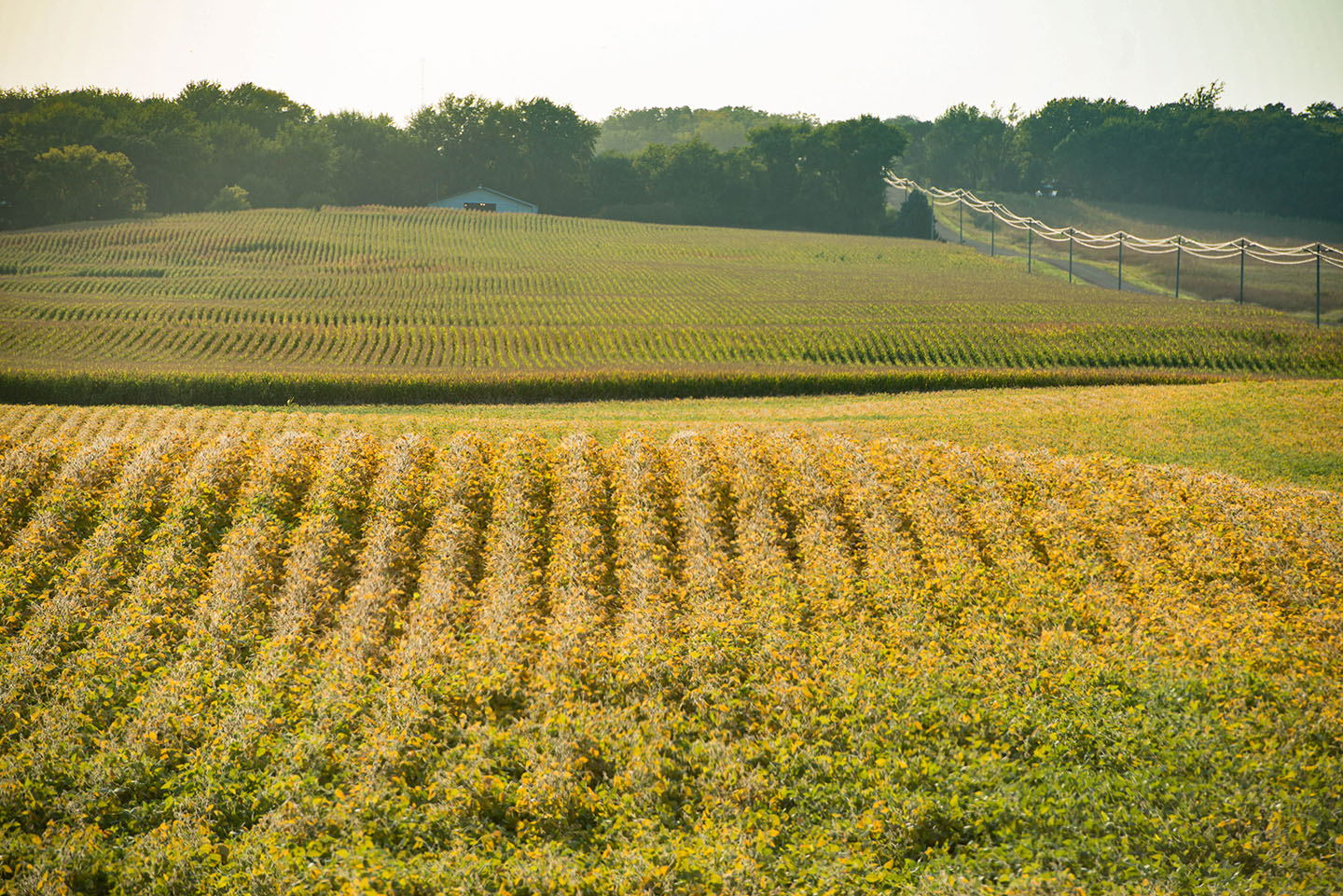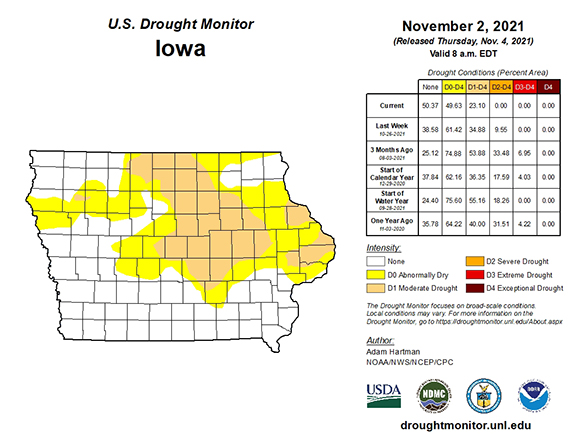
(Photo: Iowa Soybean Association)
October rain relieves drought conditions
November 4, 2021 | Kriss Nelson
For much of the fall, farmers in a large portion of the state have been able to harvest without issue.
“Getting into harvest, we had an ideal window in which farmers were able to get into the fields. We had some timely rainfalls that weren’t heavy rain events, and we were able to get a good amount harvested prior to the last two weeks,” said Justin Glisan, state climatologist for the Iowa Department of Agriculture and Land Stewardship (IDALS).
Dave Struthers, Collins-area ISA farmer member said he wasn’t affected by the October rain events.
“The majority of the rain didn’t come until the last two-thirds of the month,” Struthers says, adding the rainfall received on Oct. 11 and Oct. 13 was helpful for his family’s annual “pick and plow” event. “The rains allowed us to be able to plow.”
Conditions dried out and harvest continued shortly thereafter, until the week of Oct. 24 where in a four-day period Struthers’ area received 4.2-inches of rain. By that time, most of the crops in his area had been harvested
This week, Struthers said he is continuing with fall fieldwork, focusing on hauling bedded manure with liquid manure to start within the week.
According to the IDALS weekly crop progress and conditions report for the week ending Oct. 31, widespread precipitation slowed or halted harvest across much of Iowa and limited farmers to just 2.7 days suitable for fieldwork.
Field activities, when possible, included harvesting and fall tillage.
Thanks to the ideal harvest conditions throughout September. and the first half of October, it allowed for 70% of Iowa’s corn to be harvested, which is four days ahead of the five-year average.
Iowa soybean harvest was 88 % completed last week, which is two days ahead of the five-year average.
The week’s precipitation helped replenish soil moisture. Eighty-six percent of the state’s topsoil moisture was rated adequate to surplus; the highest percentage of the season.
Although the rain, for some, delayed harvest progress, for Glisan it was a welcoming site.
“If we don’t bank any moisture in the fall for the next growing season, that puts us at a disadvantage, to say the least – especially given the persisting drought conditions,” he says. “The last two weeks, we have been really fortunate; we have shifted into a wetter pattern.”
So much so, preliminary results are showing Oct. 2021 to be the 10th wettest October on record.
“Just over the last 10 days, we have received anywhere from three- to five- inches of rainfall from central Iowa into southwestern Iowa and widespread two- to four-inches across the rest of the state,” Glisan says.
According to Glisan, the current drought depiction released on Nov. 4, shows the removal of D2 (severe drought) conditions from Iowa.

(The U.S. Drought Monitor is produced through a partnership between the National Drought Mitigation Center at the University of Nebraska-Lincoln, the United States Department of Agriculture, and the National Oceanic and Atmospheric Administration.)
“This is the first time since the week of July 7, 2020, that Iowa has been free of severe drought. Drought extent is also the lowest it has been since early March 2020,” he says. “Sub-soil moisture profiles have improved significantly along with elevated stream flows. This tells us that soils are getting deep moisture infiltration and allowing some rainfall to replenish streams.”
What has the recent rainfall done to the drought monitor?
Although the October appears to be hitting the record books, it was not a hinderance for Wayne Fredericks of Osage.
Fredericks’ area missed most of the rainfall.
“We had a dry harvest with good crops in the area,” he says.
Soybean harvest, however, continues to be a focus for several farmers in the Mitchell County area.
“There were a lot of replant soybeans in the area from the Memorial Day weekend frost,” says Fredericks.
Fredericks said that although the drier conditions helped to complete harvest this year, he is also anxious for some moisture to come to help recharge the soils for next year’s growing season.
Moving forward
Glisan says it appears we have left the rain in October. The weather outlook shows farmers should be able to wrap up harvest and have a good shot at completing fall fieldwork.
“After cooler conditions this week, we look to transition into near normal, to slightly elevated chances of warmer conditions moving into the second week of Nov. with a wetter signal developing,” he says. Near-normal conditions should reemerge into the third week of November.”
Back